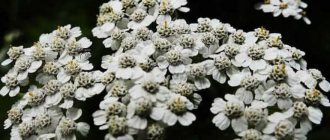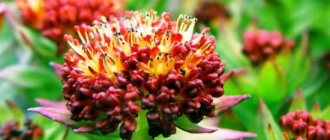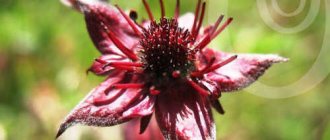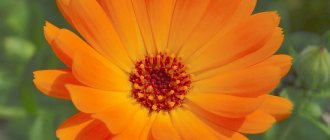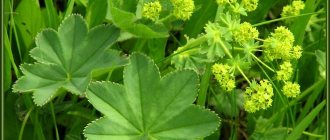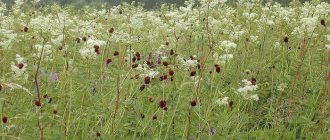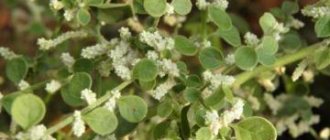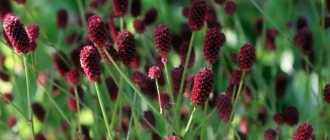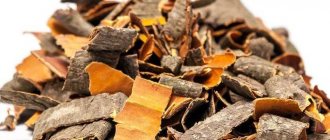Yarrow beneficial properties and contraindications for women and men described in this article is a perennial herb belonging to the Asteraceae family. Distributed almost everywhere. Its beneficial properties are highly valued by herbalists and fans of natural methods of treating diseases.
Other names for yarrow are whitehead, cutleaf and others. Military doctors call it a tenacious herb for its invaluable medicinal properties. In case of serious wounds and injuries, yarrow can save life.
The plant has a characteristic smell that is unmistakably recognizable. Once you recognize it, it is impossible to confuse the smell with anything else. Currently, yarrow is widely used by healers; its healing qualities are also recognized by official medicine. The qualities of this herb have been well studied.
By applying this knowledge, you can cure certain diseases without using drugs of synthetic origin. This is especially valuable if intolerance to certain medications occurs.
Description
- Yarrow has a branched root that grows to the sides.
- The stems are erect, can be pubescent, up to 80 cm high.
- The leaves are linear or lanceolate, they are dissected into segments.
- Yarrow blooms with small white or pink flowers, which are basket-like inflorescences.
Most often, this grass is found at the edge of a meadow, along the edges of fields, in settlements. The plant is found throughout almost the entire European territory of the country, in Siberia and the Caucasus.
What does yarrow look like? Photo of the plant.
Dense white-cream inflorescences, an elastic hard stem, complex dark green leaves, a persistent tart smell - all these are the hallmarks of yarrow. The plant is noticeable from afar in meadows and fields with its light umbrellas, which form light peas of small flowers. It is not easy to pick a plant - the stem is very hard and can only be pulled out by the roots.
yarrow in nature
inflorescence
plant leaf
Collection and preparation
Yarrow blooms throughout the summer. With the arrival of autumn, its seeds ripen. Fresh inflorescences, which are used for harvesting, can be collected until frost. The leaves, stem, flowers and inflorescences are used for medicinal purposes.
- The flowers are collected all summer and then dried.
- The leaves and stems are collected when flowering begins. The top 15 cm or stem with several leaves are harvested.
- Yarrow should be dried on a dry surface with good ventilation. In this case, direct sunlight should be avoided. Store raw materials in bags or glass jars.
Compound
The herb contains:
- essential oil containing a large amount of chamazulene,
- esters,
- camphor,
- glycosides (luteolin and apigenin),
- tannins,
- alkaloid achillein,
- borneol,
- thujone,
- organic acids,
- cineole,
- carotene,
- resins,
- vitamins K, C,
- bitterness.
Rich in mineral content:
- magnesium,
- potassium,
- boron,
- zinc,
- calcium,
- selenium,
- copper,
- molybdenum.
The flavonoids present in it may have beneficial effects on the intestines. They will relieve spasms and reduce the formation of gases.
Achillesin, which the herb contains, will increase appetite. It irritates the taste buds. For this reason, yarrow is recommended for children with poor appetite. It is prepared as a decoction and a little honey is added to it to mask the slight bitterness.
The plant is used as a hemostatic agent because it contains choline. In this case, blood clots do not form. This is especially highly valued, since it allows the plant to be used even during heart attacks and strokes. Thrombophlebitis will also not be an obstacle to taking yarrow.
The anti-inflammatory effect of the herb is due to the presence of tanning components and essential oils. In this regard, yarrow is indispensable for the treatment of atopic and allergic dermatitis, helps with burns and suppuration of wounds.
Doctors recommend it as a sedative and sedative.
Side effects
There should be no side effects when rubbing with yarrow, even in young children.
If you use decoctions and infusions orally, you need to take into account that the medicinal herb increases the photosensitivity of the skin. After taking the medicine you need to be careful in open sunlight. This is especially true in people who are initially sensitive to ultraviolet radiation. In addition, do not forget about individual intolerance to the drug.
Beneficial features
The healing properties of yarrow are diverse and its use is very wide. This is due to the composition of biologically active substances.
Gelon forms, which are obtained by extraction, have a pronounced antispasmodic effect on the smooth muscle tissue of the biliary and urinary tract. They have a beneficial effect on intestinal function. In addition, the use of yarrow increases diuresis and relieves pain associated with spasms of the esophagus. These qualities directly depend on the presence of essential compounds and flavonoids in the herb.
Achillein has a bitter taste. It irritates the taste nerve receptors, which causes abundant secretion of gastric juice. The use of the herb will reduce intestinal bloating and eliminate flatulence.
Yarrow has the best hemostatic properties. Its local or systemic use effectively stops bleeding, without causing blood clots. It will perfectly help with any bleeding, except arterial bleeding. For these purposes, it is used at any age.
Thrombophlebitis, stroke, and heart attack do not impose strict restrictions on the use of drugs. But other remedies are not recommended in these situations, since they are dangerous for such diagnoses.
The herb contains a lot of esters, chamazulene and tanning components. Thanks to this, it is able to kill pathogenic microbes, treat inflammation, and is a good remedy against allergies.
Help with burns is also very effective. In average dosage, the herb exhibits hypotensive and sedative effects.
Watch the video! Yarrow
Pharmacological forms of application
- yarrow tea Just like normal. 1 tbsp. a spoonful of dry herb is poured with 1 glass of boiling water, left for 20 minutes.
To brew tea, use all parts - simultaneously or separately. Tea should be consumed warm or cooled. It is preferable to make a fresh brew each time.
- the infusion in a thermos. For 300 ml of boiling water take 2 tablespoons of herbs. Then all this is infused for 2 hours, it is advisable to strain. Drink during the day.
- Decoction . Brew 2 tablespoons of dry extract in 0.5 liters of water and cook for 10 minutes over low heat. When the broth has cooled, it is filtered.
- The tincture is prepared from 5 tbsp. spoons of dry grass, they are filled with 100 ml of vodka. Then put in a dark place for 7 days. You should take 20 drops at a time.
- Yarrow ointment is made from Vaseline or any animal fat. Grass is added to the base. It is better to take a fresh plant that has been crushed beforehand. In winter, you can use the dried extract. If you add streptocide, the effect will be significantly enhanced.
- Yarrow juice also brings many benefits; it should be squeezed through cheesecloth from the grass crushed into a pulp.
Contraindications
Photo: Pixabay
As such, there are no contraindications to taking plant-based medications. However, internal use of the plant requires caution.
With prolonged use and taking large doses of yarrow preparations, unpleasant consequences are possible. Nausea, dizziness and skin rashes may occur.
Traditional medicine recipes for men, women and children
Cervical erosion
Yarrow is considered very effective for this disease. Women have used it for a long time in the form of an infusion.
- You need to take the plant's umbrella and brew it in 1 liter of boiling water.
- Drink the infusion like tea.
- The entire brewed infusion should be consumed within 24 hours.
- Then in the morning you should prepare another infusion. Course - 15 days.
Internal bleeding
The essential oil and azulene make the herb very beneficial. It also contains vitamin K, achillein, and bitterness. All this is extremely effective for treating internal bleeding.
- Take no more than 1 teaspoon of dry collection.
- Pour a glass of boiling water over it and cover, let stand for an hour, strain.
- Drink the product in a quarter of a glass. It is highly recommended to do this before meals.
Spleen problems, intestinal diseases
The herb has a beneficial effect on the digestive tract, improving digestion processes and accelerating the absorption of substances. An infusion is used for this.
- 2 teaspoons dry herb.
- Brew in a glass of boiling water.
- Then you need to let it stand for 30 minutes.
- Drink half an hour before meals several times a day.
High acidity is an unpleasant disease. In this case, an infusion of dill, yarrow and St. John's wort seeds is recommended. It is required to adhere to the component ratio of 1:8:8.
- Take a tablespoon of mixed ingredients.
- Pour a glass of boiling water and let stand for 30-40 minutes.
- We filter using any available method.
- You should drink the resulting liquid several times throughout the day.
The condition of the intestinal mucosa will improve significantly if you take the inflorescences of the plant.
- 1 tbsp. a spoonful of dried flowers;
- Brew in a glass of boiling water and leave to brew for 1 hour.
- The infusion should be taken 1 tablespoon and only before eating.
Stomach ulcer, chronic gastritis
An infusion for the treatment of stomach ulcers is prepared:
- from 2 tablespoons of dry herbs and a glass of boiling water.
- half an hour before meals take 30 ml of the product.
Gastritis is treated with a decoction. Method of its preparation:
- Brew 1 tablespoon of herb in 250 g of boiling water.
- In the morning on an empty stomach before breakfast, drink one half of the prepared drug, which should be warm, and in the evening the dose is repeated before bed.
Watch the video! Yarrow. Useful properties and applications
Cystitis, genitourinary tract infections
The qualities of yarrow, as an effective antiseptic and anti-inflammatory, are indispensable for cystitis and other infections that affect the genitourinary system of the body.
- You need to steam 2 teaspoons of herbs in 250 g of boiling water.
- Should be taken half an hour before meals, 50 ml 4 times a day.
We treat kidneys with infusion
- In a glass of boiling water;
- Add 15 g (1 tbsp) of the dried collection and leave for an hour.
- You need to take 20 ml before meals.
Diseases of joints and bones
These diseases require an integrated approach when treated with herbs. The infusion is not particularly strong; it is taken three times a day, 50 ml.
Baths with herbal infusion are recommended; ointments and alcohol extracts, which allow you to make warm compresses, work very well.
Yarrow is indicated for radiculitis, rheumatism, arthritis, osteochondrosis. But it is used only as an auxiliary treatment, complementing the measures prescribed by the doctor.
For problems with the circulatory system, the herb is very useful as a hemostatic and cleansing agent.
In addition, the infusion allows for effective disease prevention. It is used in medium strength, taken every 6-7 hours, 1 tablespoon.
Fresh juice is an excellent blood cleanser. It should be mixed with honey and taken 1 teaspoon each time before meals.
Diseases of the bronchi, lungs, throat
In this case, an alcohol tincture is used. It is prepared from:
- 1 glass of vodka and 4 tbsp. spoons of dried collection.
- The infusion should stand for two weeks.
- Should be taken in the cold season, 10 drops before meals.
- The tincture will relieve cough and cleanse the lungs.
Numbness of the fingers and cramps are very unpleasant manifestations; an infusion will be an effective remedy; it makes sense to add honey to it. For treatment, you need to drink 3 glasses of the product per day, and for prevention, take 100 ml in the morning, afternoon and evening.
Diarrhea
Yarrow will help with severe diarrhea, as it contains tannins and has astringent properties. Brew tea:
- 4 teaspoons yarrow;
- per liter of boiling water.
Tea will quickly solve the problem.
Haemorrhoids
for both men and women to treat hemorrhoids on time. The herb will help treat internal and external hemorrhoids. Use decoctions and lotions.
What is yarrow used for: what it treats, what it helps with
In folk medicine, there are hundreds of recipes that include yarrow. Its medicinal properties are known not only in Russia, but also to other peoples in whose territories this herb grows.
Previously, in preparation for the upcoming battle, soldiers stocked up on yarrow. To stop bleeding, simply crush the grass in your hands and apply it to the wound. Due to its hemostatic effect, the plant received other names among the people - bloodworm or soldier's grass.
The herb can also heal other skin injuries: bruises, abrasions, contusions, as well as any purulent inflammation, pimples, boils, etc. Yarrow has anti-inflammatory and healing properties, so it can cure all of the listed skin diseases.
The healing plant helps well with diseases of the gastrointestinal tract. The chemical composition of bloodberry improves appetite, soothes the gastric mucosa with gastritis or ulcers, and also helps improve well-being with poor bowel function. The diuretic and diaphoretic properties of the herb are used in the treatment of diseases of the liver, kidneys, bladder and heart.
A decoction of the plant has an expectorant effect, so it is drunk for colds and bronchial asthma. Yarrow promotes the rapid removal of mucus and cleanses the respiratory tract.
This herb is also widely used in gynecology. An infusion or decoction of yarrow stops internal bleeding and promotes rapid contraction of the uterine muscles. For pain during menstruation, the plant is used both separately and as part of a herbal mixture.
For problem skin, traditional medicine recommends using an infusion of the plant daily while washing your face, and to treat all kinds of rashes you should make lotions with this herb. With constant use, the skin becomes beautiful and velvety.
